SO’OUD ATEN, Egypt — It’s a familiar story: The whim of a leader upends citizens’ lives and leads them into the wilderness.
In ancient Egypt, Pharaoh Akhenaten was no different. Determined that his population should stop from worshipping multiple gods, more than 3,300 years ago he told residents to seal up their homes and workshops in the city of So’oud Aten with mud and clay bricks and move to a new home, a leading Egyptologist, Zawi Hawass, told NBC News last month.
“When the king makes a decision, everyone has to obey the decision,” Hawass said. “This is the pharaoh.”
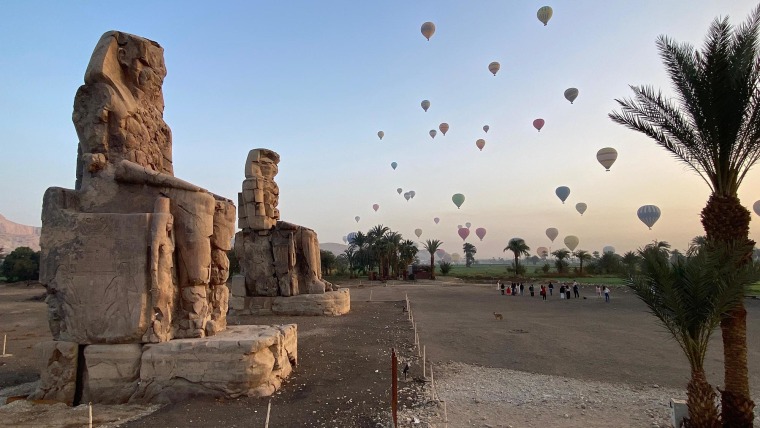
So quick was their exodus that many left behind an array of items including jewelry, pottery, children's shoes and toys, as well as a pizza peel similar to those used to make bread by their modern day descendants — a treasure trove that is now being recovered by archeologists. NBC News was given exclusive access to the latest findings.
But much is still a mystery in a city that was only discovered four years ago by archeologists searching for a mortuary temple where animal skeletons were arranged for religious rites. Egyptologists may never figure out why a fish was covered in gold.
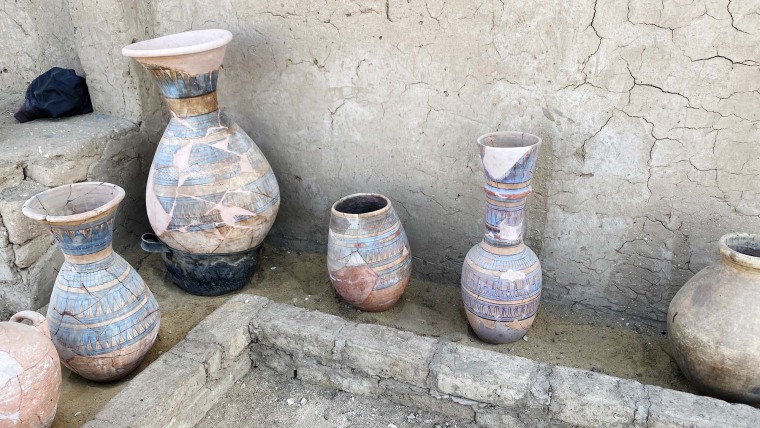
“Nobody really can explain it,” Hawass said, adding that around 500 statues of the Sekhmet, the goddess of healing, have also been found at the site, which he has dubbed the “lost golden city,” in part because it thrived during Egypt’s golden age.
Today it is a sleepy patch of desert, surrounded by a metal fence, and a dusty road. Archeologists work in the blazing sun at the site where an artificial lake with boat moorings was recently unearthed, likely created to deliver and dispatch goods to the Nile.
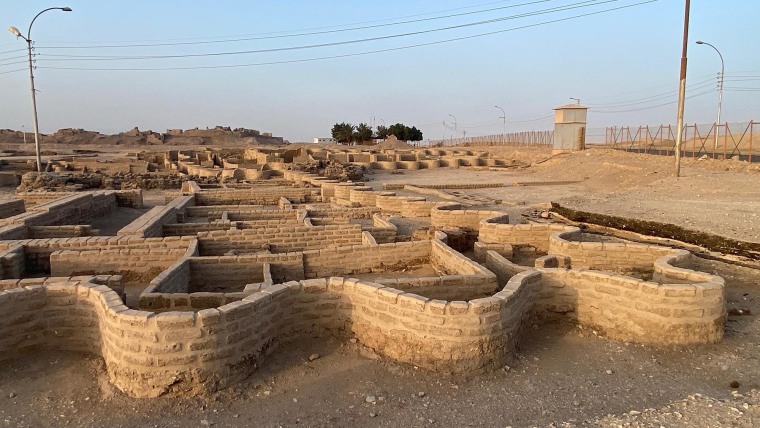
Its location though is hugely significant. Situated near Luxor, an ancient city in central Egypt, it is surrounded by historical monuments, including the Colossi of Memnon, the Madinat Habu Temple and the Ramesseum. During the 18th dynasty, this was royal Egypt.
Hawass, who served as Egypt’s minister for antiquities, said that So’oud Aten provides important information about the high standard of living for artisans and craftsmen as well as “the daily life of the people,” who were so well off that archeologists “found many showers inside the houses,” he said.
In the past few months Hawass said a set of administrative buildings akin to a police station or town hall have also been uncovered.
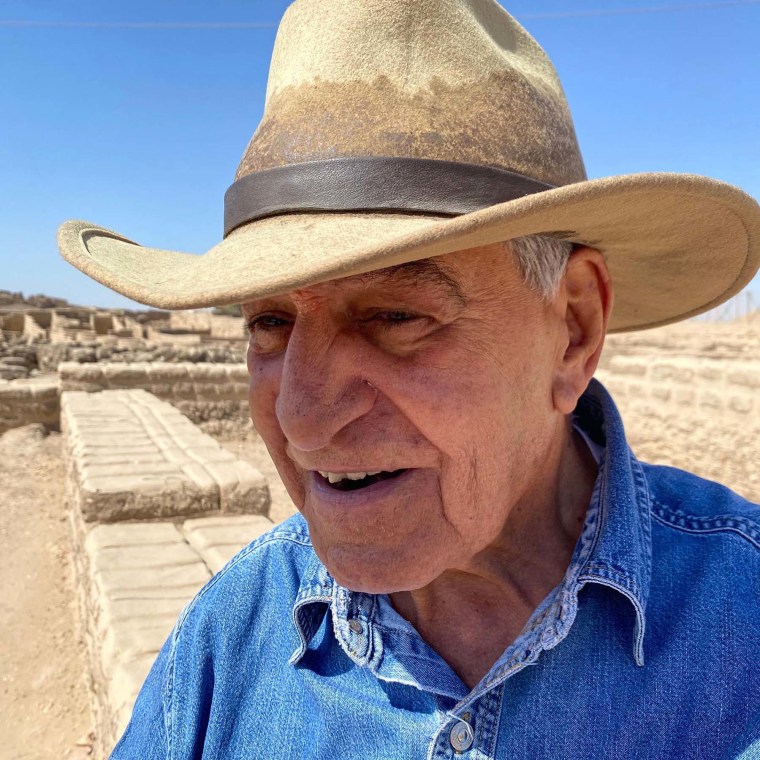
“It’s a snapshot in time,” said Salima Ikram, a professor of Egyptology at the American University of Cairo.
Workmen just laid down their tools, she said, adding, “Their stuff is lying around. They’re in the middle of making, you know, pegging out a cow hide. They’re cutting out sandals, and suddenly, all of this.”
Another recent discovery, a sun image etched onto the wall of a room in the district of the city where spinning, leatherwork and jewelry production took place, appears to signal a shift in religious thinking over time, Hawass said.
Then in his life changing ruling, Akhenaten decided that his citizens should worship Aten, who was represented by the sun, he said, adding that it was possibly the first historical example of monotheism.
Others like Ikram, prefer to define him as a henotheist — someone who worships one particular god, while acknowledging the existence and potential worship of other deities.
Akhenaten, Hawass said, was “hated” by religious priests who profited from the worship of multiple gods.
“He wanted to go to a place to worship Aten,” Hawass said, adding that he chose a site known today as Tell-el Amarna, around 200 miles south of Egypt’s capital, Cairo.
He called the new city the “Rise of Aten,” Hawass said, adding that he believed that he was inspired to build the city by his father, Amenhotep III, who ruled Egypt from 1391 till 1353 B.C.
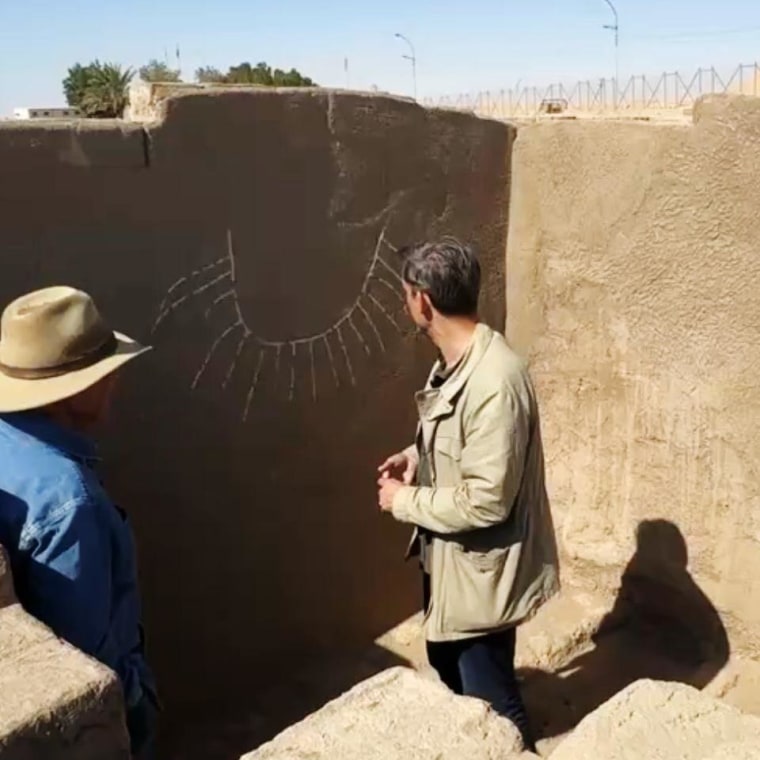
Queen Nefertiti, Akhenaten’s far more famous wife, would have walked the streets alongside him, Hawass added.
The move was a “religious revolution,” said Yasmin El Shazly, the deputy director of the American Research Center in Egypt, which , which offers financial assistance to some archeologists. “We know that during the reign of Amenhotep lll, the religion became increasingly solar. There is evidence of the Aten, but there are other deities as well. So we know that it was not monotheistic at the time.”
But mentioning other gods, especially the major deity Amun, “became prohibited” under the reign of Akhenaten, she said.
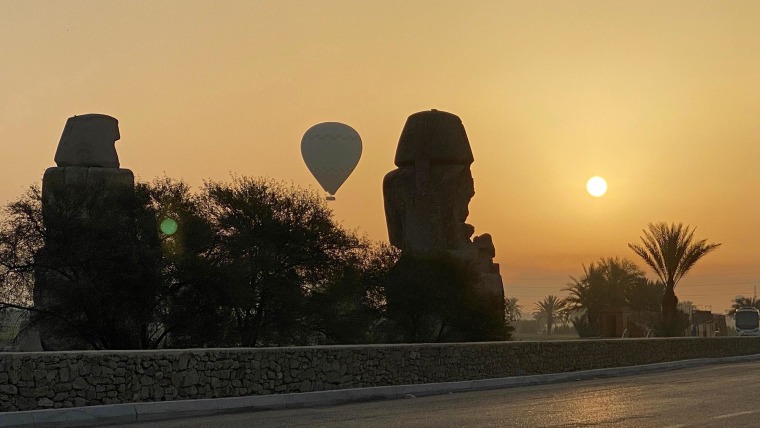
After Akhenaten’s death the city continued to be used by pharaohs including Tutankhamun, whose nearly intact tomb was discovered in the Valley of the Kings by British archaeologist Howard Carter in 1922.
What the citizens thought about leaving their original home in So’oud Aten remains unclear.
By blocking the doors, Hawass said it appeared that they were thinking they may come back and they wanted to “keep it safe.”
But at the time, he said no one could raise their objections to the pharaoh. “No one can talk to the king,” he said.
